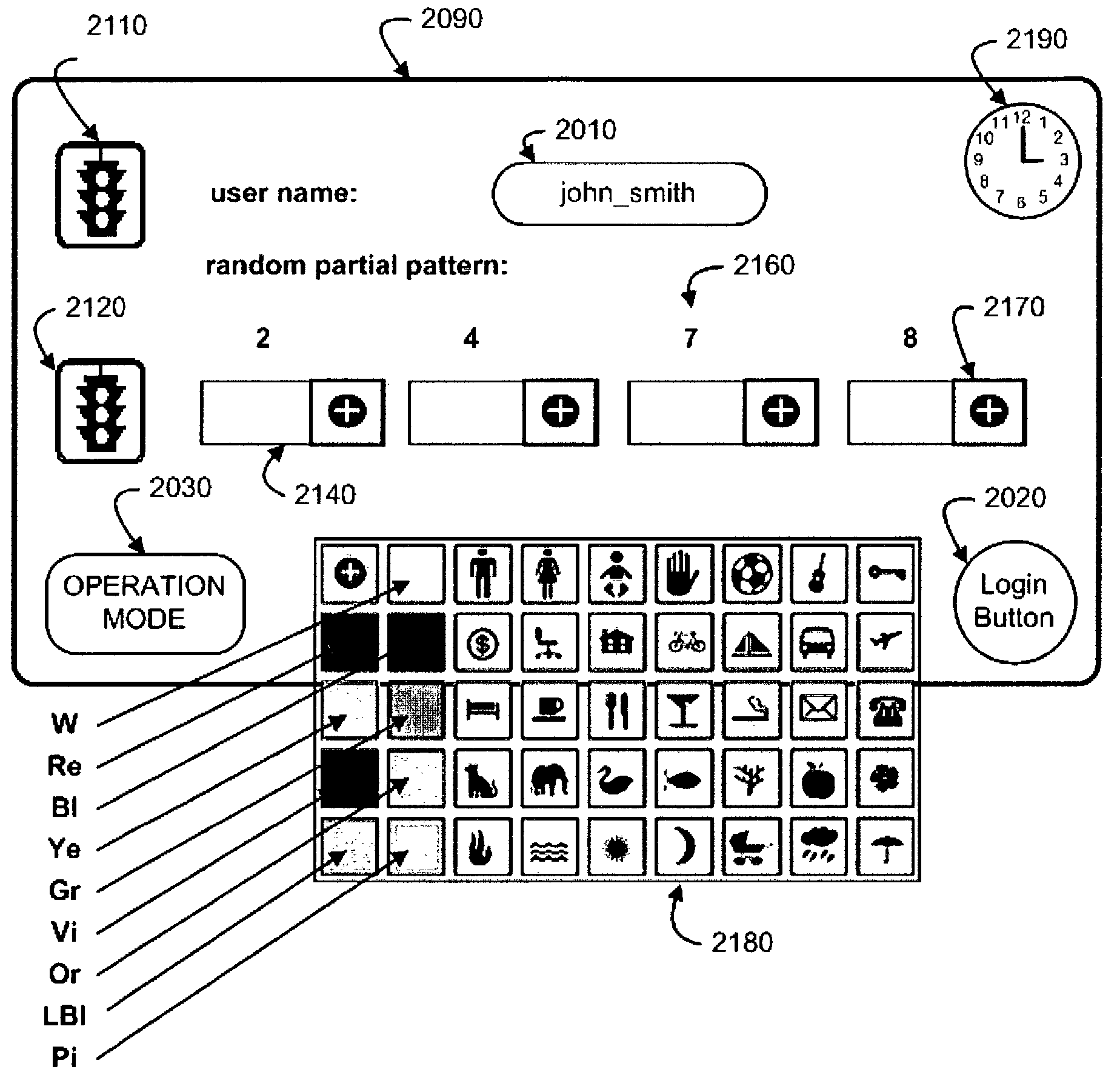Technological progress and demands of contemporary industrial society security lead to at least two serious issues related to the safety of typical passwords in SSPR, including:1. An intruder may employ a brute-force technique, known as a
Dictionary attack, of successively trying all the words in an exhaustive
list against a
password file.
Dictionary attacks, applied either to hashed passwords, intercepted on communication lines, or directly at the password entry devices, allow for quite easy password re-
engineering.2. Another issue is related to password combinatorial capacities of typical passwords that are within a “comfort level” of complexity for most users.
For larger organizations, a range of passwords within such comfort level may not be sufficient.
This approach leads to multiple password resets by users that forget or lose their passwords, which resets have become quite costly and annoying hurdles for organizations and enterprises (or service companies) striving for higher security levels.
The maximum number of characters in static passwords is limited by users' “comfort level” for memorization.
Unfortunately, as we already discussed, this capability is already quite limited by users “comfort level”.
So, SSPR based security systems appeared to be in between a rock and a hard place, as the minimum password length (3-4
alphanumeric characters) must be increased to sustain more and more efficient combinatorial attacks, whereas the entire static password length has to be remained unchanged and limited to 6-7
alphanumeric characters range due to
human being memory limitations.2. Also, a number of security problems arising in large scale systems, like deficiencies in state / country voting systems,
credit card fraud, privacy and security breaches at
health data banks and at financial service organizations, Microsoft 2000 and XP operating systems' vulnerabilities, etc., have led to the necessity to improve or re-build large scale security systems.
Accordingly, SSPR is reaching the limits of its practical application for large-scale static password based security systems.
The other ones can be a part of
user authentication systems, but are insufficient by themselves.
Unfortunately,
biometrics is great deal more expensive and difficult to deploy, than SSPR based systems.
There is, also, a significant public reluctance against biometric authentication methods due to religious and cultural concerns.
Besides several issues listed above, static password technology is particularly vulnerable to a number of attacks, and defenses against such attacks have limited scope.
1.
Password GuessingAn intruder tries to log in with a real user name while making password guesses based on the user personal knowledge.Defense—automatic session lock out after several failed attempts; possible account revoke or a forced password reset
2. Log-In Session VideotapingWidely available micro audio and visual sensors, and other tools, facilitate hidden observations. Video- and / or audio-recording is possible from a significant distance and any time of the day, jeopardizing secret passwords or PINS entered by computer or network online users at public locations (ATM machines; customers at Point-Of-Sales; Internet terminals offered at various conferences, cafes, libraries; employees sharing large offices with desktop computer terminals within everybody's visual reach, and other places).Defense—no standard protection technology except being vigilant.
3. Shoulder SurfingAn intruder nearby the legitimate user watches password entering.Defense—no standard protection technology except displaying echo dummy characters and different number of them.
4. Social EngineeringAn intruder pretends to be an administrator or a real user asking for a password disclosure / reset.Defense—non disclosure / reset policy.
5. Trojan HorseHidden downloaded
software looking like a standard
login session but collecting instead user names and passwords.Defense—some protection is possible for vigilant users and administrators with antivirus protection and intrusion detection
software.
6. Keystroke MonitoringSecretly downloaded
software keeping a log of all keystrokesDefense—employees are defenseless, if the employer is the
attack originator; legal protection is a possible alternative.
7. Con ArtistsCan figure out the password while being quite far from the real user and having special hearing / observation skills / training.Defense—no standard protection technology except being vigilant.
8. Network SniffingAn intruder records user names and passwords while in transit on communication lines.Defense—
encryption protocols:
Kerberos, SSL,
IPsec;
challenge response, one time passwords with tokens or smart cards;
biometrics instead of passwords.
9. Keyboard Buffer Memory SniffingSome desktop operating systems do not have hardware protection against intruders' software
copying passwords from a keyboard buffer.Defense—no standard protection except making hardware protection at a
microprocessor level.
As manifested by the
list of attacks above, SSPR security technology is vulnerable to well known security breaches.
However, no known approach (except SSPR) has experienced wide public and industry acceptance.
Further, none allow for a comprehensively secure
system and method of
user authentication, covering the entire
list of requirements listed above.
 Login to View More
Login to View More  Login to View More
Login to View More 


